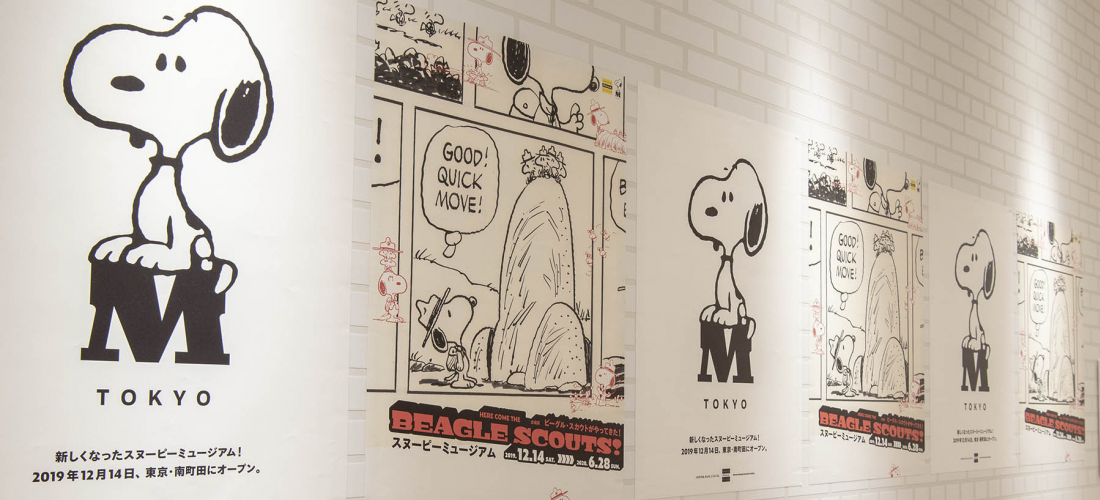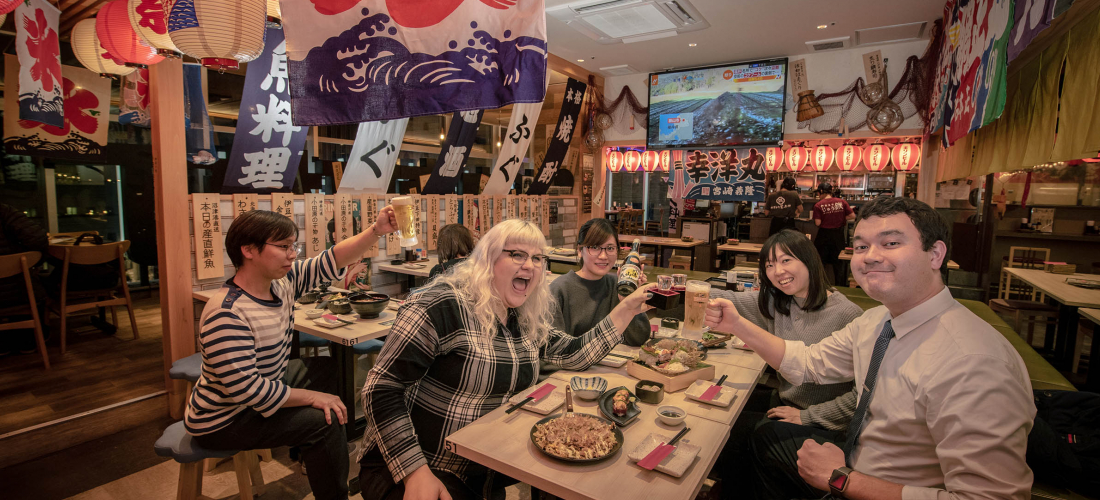CONTENTS
Le Japon adore les plats uniques et la cuisine locale, et ces six délices ne sont que la pointe de l’iceberg en matière de cuisine japonaise!
1. Wasabi Donburi & Jus au Wasabi
!!! Attention !!! les produits suivants sont au !!! WASABI !!!
Pour certains d'entre nous, cela peut être une arme mortelle, pour d'autres, c'est un plaisir certain. Cette sensation vive qui commence par brûler la bouche, puis qui frappe le nez et les sinus, allant parfois jusqu'aux larmes aux yeux …
Que vous aimiez ou non les épices du wasabi, ces plats vous réveilleront sûrement! Ci-dessus, vous verrez un repas complet de wasabi, disponible au restaurant Daio Wasabi Farm dans la préfecture de Nagano. Ce plateau comprend du wasabi-don (ワ サ ビ 丼, un bol de riz au wasabi), des feuilles de tempura wasabi et une petite noix de wasabi frais que vous pouvez moudre vous-même. Oubliez le radis pimenté que vous obtenez à l'étranger, ce wasabi est authentique et on ne peut plus frais. Dans la même ferme de wasabi, vous pouvez également essayer le curry de wasabi (style thaï au curry vert), la crème glacée au wasabi et tout laver avec une boisson rafraîchissante au wasabi.
Si la vie vous donne des citrons, faites-en une boisson au wasabi (très mauvaise traduction d'une expression anglaise et d'un jeu de mots sur le wasabi). Cette boisson est un mélange rafraichissant de tarte au citron et au wasabi qui vous reveillera comme il faut.
(N'oubliez pas non plus leur bière au wasabi)
Le wasabi fraîchement râpé est quelque chose de presque inconnu en dehors de l'Asie de l'Est, car le wasabi authentique est notoirement difficile à cultiver et à livrer à l'étranger.
2. Pizza au Shirasu
Shirasu (シ ラ ス), petits poissons alevins, sont largement utilisés dans la cuisine japonaise, mais pas aussi répandus à l'étranger. Dommage, étant donné que les shirasu sont une excellente source de calcium!
Il y a quelques endroits au Japon où vous pouvez déguster ces petits poissons fraîchement pêchés, mais les shirasu ne sont disponibles crus qu'une partie de l'année. Pour un avant-goût des petits bijoux remplis d'umami, Enoshima est l'endroit le plus proche de Tokyo.
Une pizza… au Shirasu!?
Autour du Japon, le shirasu est généralement mangé avec du riz et desaliments de base japonais. Cependant, nous ne connaissons qu'un seul endroit où vous pouvez trouver le petit poisson sur une pizza! Un restaurant à Enoshima a décidé que les shirasu ne sont pas seulement destinés à la cuisine japonaise traditionnelle, mais qu'ils sont bons pour être réinventés. Si les anchois peuvent être savourés sur une pizza, pourquoi ce petit poisson blanc ne serait-il pas aussi une bonne garniture? Et voilà, la pizza shirasu, savoureux sur une pâte croustillante, une sauce tomate brillante et une couche de fromage satisfaisante.
Pour un plat plus traditionnel, le shirasu cru (un peu comme le sashimi) n'est disponible que quelques mois par an. Shirasu-don, un lit de riz surmonté d'un tas de alevins de poisson super frais, est un mets rare même pour beaucoup de Japonais!
3. Ippon Udon
Un udon pas comme les autres.
Ce plat, trouvé dans la ville de Hanyu, Saitama, est servi avec un seul long brin d'udon dans un bol. C'est un vrai, un gros, long morceau de nouilles udon. Mais l'udon est cuit dans le bouillon pour absorber juste la bonne quantité de saveur salée. En le regardant, vous pouvez voir que ce n'est pas un udon ordinaire.
Ippon udon (一 本 う ど ん, littéralement udon à un brin), a une histoire enveloppée de mystère et de légende au Japon. Certains historiens de la gastronomie pensent que c'est un plat authentique qui existait dans le passé du Japon. Un restaurant familial au Japon propose le plat, affirmant que leur recette remonte aux ancêtres qui ont créé l'ippon udon il y a longtemps. D'autres au Japon disent qu'il y a peu de preuves pour cette affirmation, et que ce n'est que du mythe. Qui que ce soit qui a inventé le concept original, ils avaient clairement une imagination impressionnante! Ce bol particulier d'ippon udon provenait d'un restaurant en bordure de route totalement différent, où il a fallu trois ans aux chefs pour perfectionner la nouvelle recette.
En fin de compte, ils ont proposé une nouille moelleuse et savoureuse, avec une texture presque comme du mochi!
4. Pot-au-feu de calamar luciole
Gros plan sur les ingrédients
Ce n'est pas votre pot-au-feu shabu-shabu de tous les jours!
Normalement, le shabu-shabu est principalement un plat de viande, et vous êtes plus susceptible de trouver du bœuf de haute qualité dans un restaurant japonais de pot-au-feu que des fruits de mer. Cependant, dans ce cas, les délicats calamars lucioles (ou hotaru ika, ホ タ ル イ カ) sont la vedette du spectacle. Les calamars luciole, ainsi nommés parce qu'ils brillent dans la mer nocturne, sont rapidement cuits dans le bouillon doux et mangés entiers! Si les globes oculaires vous font un peu peur, ce n'est peut-être pas le plat qu'il vous faut, mais faites-nous confiance quand nous disons que c'est un mets délicat.
5. Negisoba
Oubliez les baguettes ― essayez de manger ce bol de nouilles soba avec un seul oignon vert!
C'est vrai, en japonais negi (ネ ギ) signifie oignon vert, donc c'est littéralement un oignon vert soba. Il peut sembler difficile de manger rien qu'en le regardant, mais après avoir essayé, les gens disent souvent que ce n'est pas vraiment difficile. Vous pouvez voir que le negi fait un bon travail pour ramasser des nouilles! Le plat est une spécialité d'Ouchi-juku, dans la préfecture de Fukushima.
Ne vous inquiétez pas, les restaurants fourniront toujours des baguettes à ceux qui en ont besoin.
Quand quelque chose comme ça est placé devant vous, il est assez difficile de savoir par où commencer.
Voilà comment on fait! Vous pouvez progressivement manger le poireau si vous le désirez.
6. Langue de boeuf (Gyu-tan)
Au Japon, la langue de vache ou de bœuf s'appelle gyu-tan (牛 タ ン) et c'est une délicatesse à prix élevé. Ces dernières années, la viande de langue a perdu de sa popularité dans de nombreuses régions du monde, comme les abats et les morceaux comme les tripes. Mais la viande tendre, avec une texture unique et une saveur délicieuse, est toujours populaire au Japon! Étant donné que chaque vache ne fournit qu'une quantité très limitée de viande de langue, la langue finit par être un morceau apprécié, ce qui en fait une gâterie à prix élevé.
Le gyu-tan est souvent préparé sur un gril flamboyant, cuit au barbecue à la perfection.
Le produit fini se marie extrêmement bien avec du wasabi fraîchement moulu, comme nous l'avons décrit ci-dessus!
Une face différente de la cuisine japonaise
Vous prévoyez de voyager au Japon? Les ramen et les sushis sont de délicieux éléments de tout voyage, mais pourquoi ne pas essayer ces plats uniques pendant que vous êtes ici? Nous pensons qu'ils sont plutôt délicieux, mais même si vous ne pouvez pas être d'accord, vous aurez une belle histoire à raconter à la maison!
Restez à l'affût de nouveaux articles originaux sur JAPANKURU. 🐶 Assurez-vous de nous suivre Facebook et Instagram pour plus d'histoires japonaises!
JAPANESE BEEF | 4 Must-Try Restaurants in Tokyo
Exploring Japan's All You Can Eat and Drink "Houdai" Culture
COMMENT
FEATURED MEDIA
VIEW MORE 
A New Tokyo Animal Destination: Relax & Learn About the World’s Animals in Japan
#pr #japankuru #anitouch #anitouchtokyodome #capybara #capybaracafe #animalcafe #tokyotrip #japantrip #카피바라 #애니터치 #아이와가볼만한곳 #도쿄여행 #가족여행 #東京旅遊 #東京親子景點 #日本動物互動體驗 #水豚泡澡 #東京巨蛋城 #เที่ยวญี่ปุ่น2025 #ที่เที่ยวครอบครัว #สวนสัตว์ในร่ม #TokyoDomeCity #anitouchtokyodome

Shohei Ohtani Collab Developed Products & Other Japanese Drugstore Recommendations From Kowa
#pr #japankuru
#kowa #syncronkowa #japanshopping #preworkout #postworkout #tokyoshopping #japantrip #일본쇼핑 #일본이온음료 #오타니 #오타니쇼헤이 #코와 #興和 #日本必買 #日本旅遊 #運動補充能量 #運動飲品 #ช้อปปิ้งญี่ปุ่น #เครื่องดื่มออกกำลังกาย #นักกีฬา #ผลิตภัณฑ์ญี่ปุ่น #อาหารเสริมญี่ปุ่น

도쿄 근교 당일치기 여행 추천! 작은 에도라 불리는 ‘가와고에’
세이부 ‘가와고에 패스(디지털)’ 하나면 편리하게 이동 + 가성비까지 완벽하게! 필름카메라 감성 가득한 레트로 거리 길거리 먹방부터 귀여움 끝판왕 핫플&포토 스폿까지 총집합!
Looking for day trips from Tokyo? Try Kawagoe, AKA Little Edo!
Use the SEIBU KAWAGOE PASS (Digital) for easy, affordable transportation!
Check out the historic streets of Kawagoe for some great street food and plenty of picturesque retro photo ops.
#pr #japankuru #도쿄근교여행 #가와고에 #가와고에패스 #세이부패스 #기모노체험 #가와고에여행 #도쿄여행코스 #도쿄근교당일치기 #세이부가와고에패스
#tokyotrip #kawagoe #tokyodaytrip #seibukawagoepass #kimono #japantrip

Hirakata Park, Osaka: Enjoy the Classic Japanese Theme Park Experience!
#pr #japankuru #hirakatapark #amusementpark #japantrip #osakatrip #familytrip #rollercoaster #retrôvibes #枚方公園 #大阪旅遊 #關西私房景點 #日本親子旅行 #日本遊樂園 #木造雲霄飛車 #히라카타파크 #สวนสนุกฮิราคาตะพาร์ค

🍵Love Matcha? Upgrade Your Matcha Experience With Tsujiri!
・160년 전통 일본 말차 브랜드 츠지리에서 말차 덕후들이 픽한 인기템만 골라봤어요
・抹茶控的天堂!甜點、餅乾、飲品一次滿足,連伴手禮都幫你列好清單了
・ส่องมัทฉะสุดฮิต พร้อมพาเที่ยวร้านดังในอุจิ เกียวโต
#pr #japankuru #matcha #matchalover #uji #kyoto #japantrip #ujimatcha #matchalatte #matchasweets #tsujiri #말차 #말차덕후 #츠지리 #교토여행 #말차라떼 #辻利抹茶 #抹茶控 #日本抹茶 #宇治 #宇治抹茶 #日本伴手禮 #抹茶拿鐵 #抹茶甜點 #มัทฉะ #ของฝากญี่ปุ่น #ชาเขียวญี่ปุ่น #ซึจิริ #เกียวโต

・What Is Nenaito? And How Does This Sleep Care Supplement Work?
・你的睡眠保健品——認識「睡眠茶氨酸錠」
・수면 케어 서플리먼트 ‘네나이토’란?
・ผลิตภัณฑ์เสริมอาหารดูแลการนอน “Nenaito(ネナイト)” คืออะไร?
#pr #japankuru #sleepcare #japanshopping #nenaito #sleepsupplement #asahi #睡眠茶氨酸錠 #睡眠保健 #朝日 #l茶胺酸 #日本藥妝 #日本必買 #일본쇼핑 #수면 #건강하자 #네나이토 #일본영양제 #อาหารเสริมญี่ปุ่น #ช้อปปิ้งญี่ปุ่น #ร้านขายยาญี่ปุ่น #ดูแลตัวเองก่อนนอน #อาซาฮิ

Japanese Drugstore Must-Buys! Essential Items from Hisamitsu® Pharmaceutical
#PR #japankuru #hisamitsu #salonpas #feitas #hisamitsupharmaceutical #japanshopping #tokyoshopping #traveltips #japanhaul #japantrip #japantravel

Whether you grew up with Dragon Ball or you just fell in love with Dragon Ball DAIMA, you'll like the newest JINS collab. Shop this limited-edition Dragon Ball accessory collection to find some of the best Dragon Ball merchandise in Japan!
>> Find out more at Japankuru.com! (link in bio)
#japankuru #dragonball #dragonballdaima #animecollab #japanshopping #jins #japaneseglasses #japantravel #animemerch #pr

This month, Japankuru teamed up with @official_korekoko to invite three influencers (originally from Thailand, China, and Taiwan) on a trip to Yokohama. Check out the article (in Chinese) on Japankuru.com for all of their travel tips and photography hints - and look forward to more cool collaborations coming soon!
【橫濱夜散策 x 教你怎麼拍出網美照 📸✨】
每次來日本玩,是不是都會先找旅日網紅的推薦清單?
這次,我們邀請擁有日本豐富旅遊經驗的🇹🇭泰國、🇨🇳中國、🇹🇼台灣網紅,帶你走進夜晚的橫濱!從玩樂路線到拍照技巧,教你怎麼拍出最美的夜景照。那些熟悉的景點,換個視角說不定會有新發現~快跟他們一起出發吧!
#japankuru #橫濱紅磚倉庫 #汽車道 #中華街 #yokohama #japankuru #橫濱紅磚倉庫 #汽車道 #中華街 #yokohama #yokohamaredbrickwarehouse #yokohamachinatown

If you’re a fan of Vivienne Westwood's Japanese designs, and you’re looking forward to shopping in Harajuku this summer, we’ve got important news for you. Vivienne Westwood RED LABEL Laforet Harajuku is now closed for renovations - but the grand reopening is scheduled for July!
>> Find out more at Japankuru.com! (link in bio)
#japankuru #viviennewestwood #harajuku #omotesando #viviennewestwoodredlabel #viviennewestwoodjapan #비비안웨스트우드 #오모테산도 #하라주쿠 #日本購物 #薇薇安魏斯伍德 #日本時尚 #原宿 #表參道 #japantrip #japanshopping #pr

Ready to see TeamLab in Kyoto!? At TeamLab Biovortex Kyoto, the collective is taking their acclaimed immersive art and bringing it to Japan's ancient capital. We can't wait to see it for ourselves this autumn!
>> Find out more at Japankuru.com! (link in bio)
#japankuru #teamlab #teamlabbiovortex #kyoto #kyototrip #japantravel #artnews
Photos courtesy of teamLab, Exhibition view of teamLab Biovortex Kyoto, 2025, Kyoto ® teamLab, courtesy Pace Gallery

Japanese Makeup Shopping • A Trip to Kamakura & Enoshima With Canmake’s Cool-Toned Summer Makeup
#pr #canmake #enoshima #enoden #에노시마 #캔메이크 #japanesemakeup #japanesecosmetics

⚔️The Robot Restaurant is gone, but the Samurai Restaurant is here to take its place. Check it out, and don't forget your coupon!
🍣신주쿠의 명소 로봇 레스토랑이 사무라이 레스토랑으로 부활! 절찬 쿠폰 발급중
💃18歲以上才能入場的歌舞秀,和你想的不一樣!拿好優惠券去看看~
#tokyo #shinjuku #samurairestaurant #robotrestaurant #tokyotrip #도쿄여행 #신주쿠 #사무라이레스토랑 #이색체험 #할인이벤트 #歌舞伎町 #東京景點 #武士餐廳 #日本表演 #日本文化體驗 #japankuru #japantrip #japantravel #japanlovers #japan_of_insta

Japanese appliance & electronics shopping with our KOJIMA x BicCamera coupon!
用JAPANKURU的KOJIMA x BicCamera優惠券買這些正好❤️
코지마 x 빅 카메라 쿠폰으로 일본 가전 제품 쇼핑하기
#pr #japankuru #japanshopping #kojima #biccamera #japaneseskincare #yaman #dji #osmopocket3 #skincaredevice #日本購物 #美容儀 #相機 #雅萌 #日本家電 #일본여행 #면세 #여행꿀팁 #일본쇼핑리스트 #쿠폰 #일본쇼핑 #일본브랜드 #할인 #코지마 #빅카메라 #japankurucoupon






















































